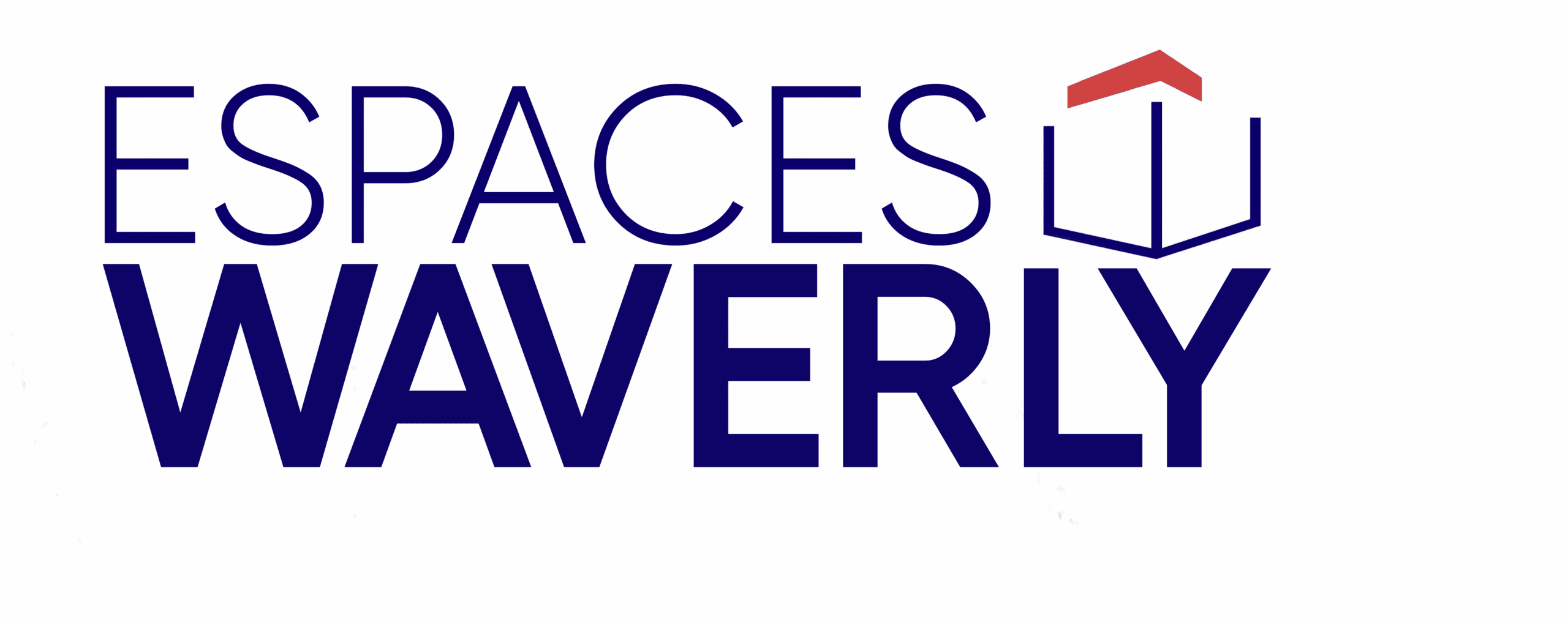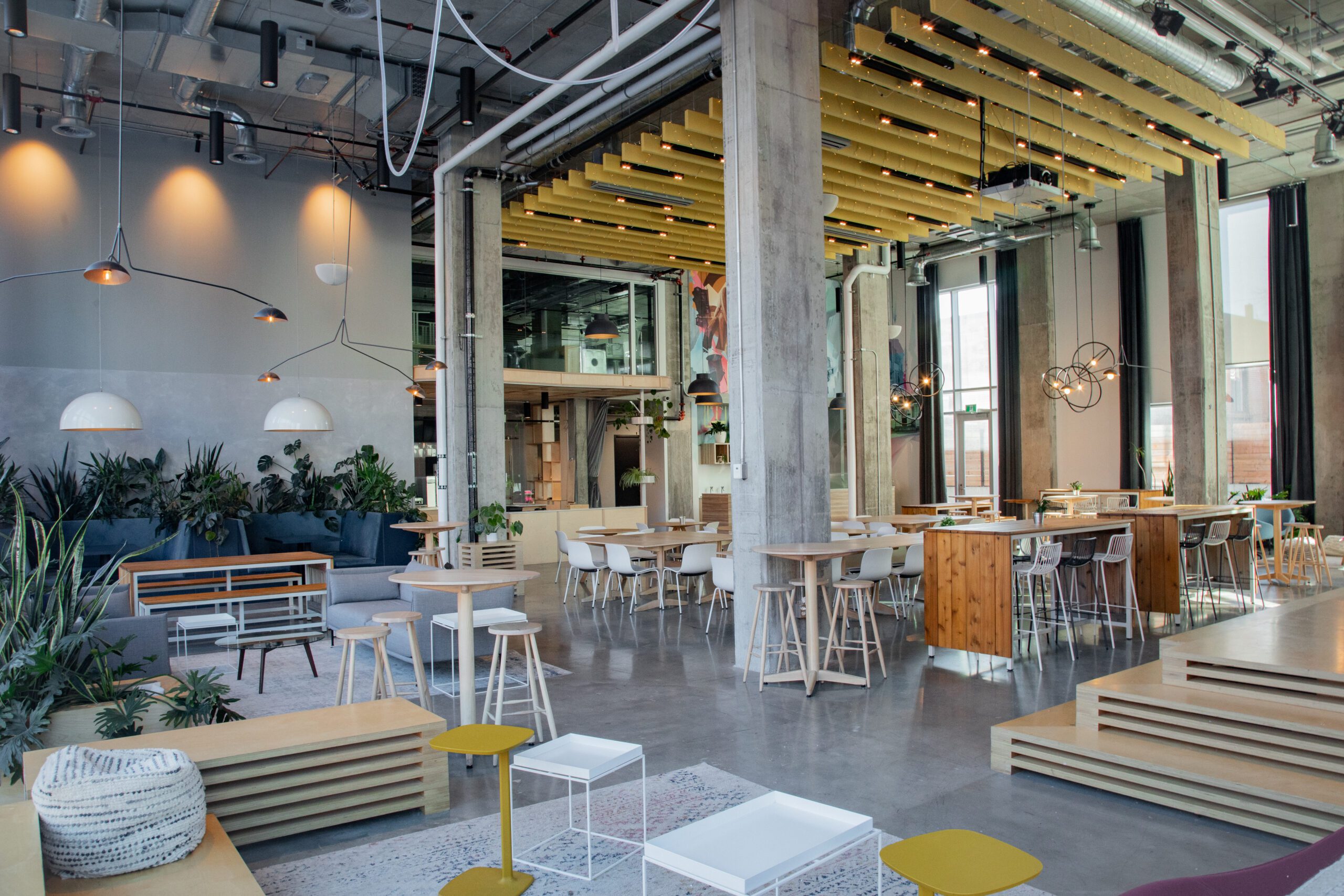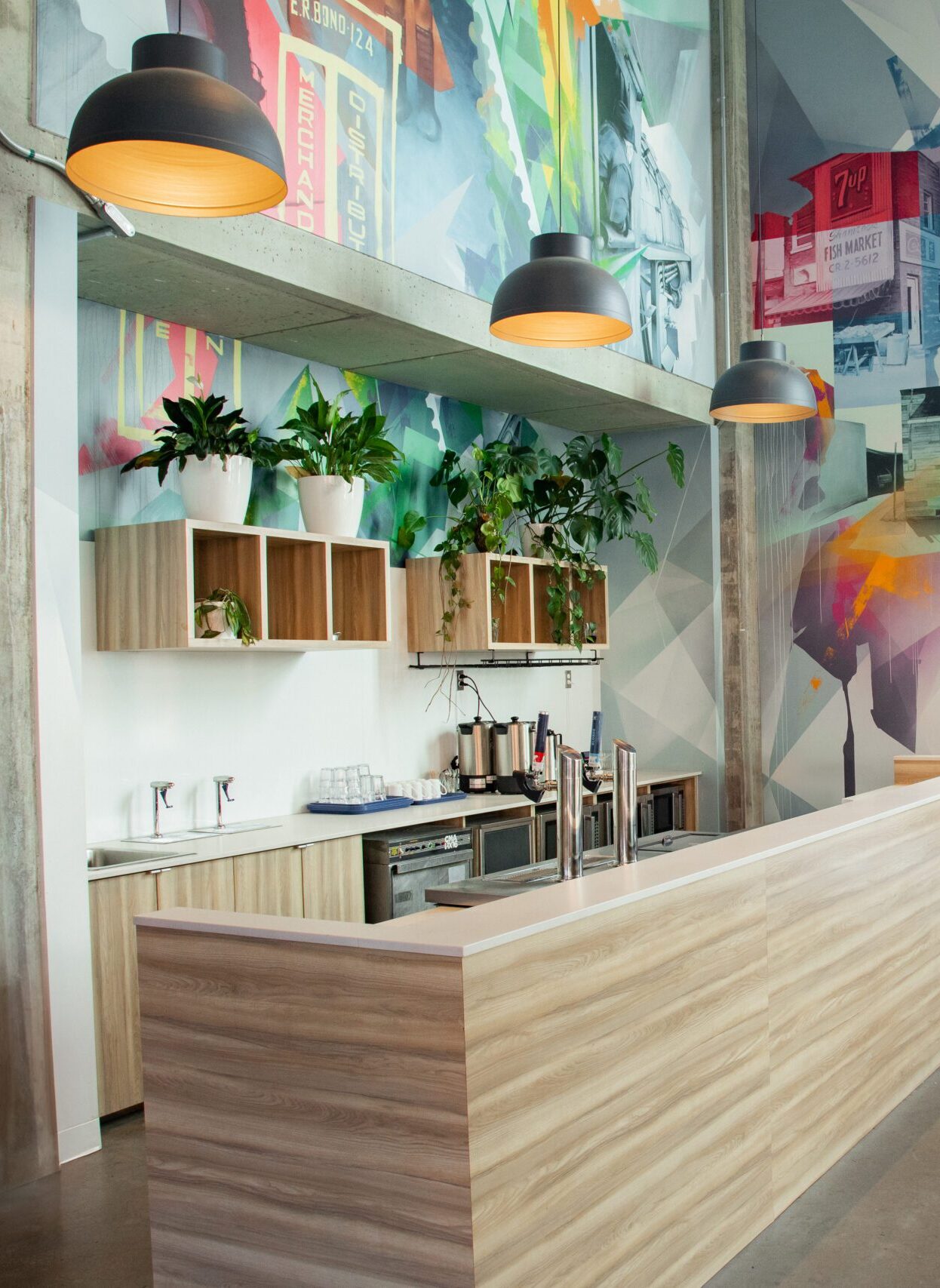The pandemic has disrupted our relationship with work. Overnight, companies had to rethink their spaces, tools, and organizational culture. What initially seemed like a temporary measure has turned into a profound transformation of the professional world. Today, as offices come back to life, one question arises: what does the modern workplace look like?
Far from the closed and impersonal offices of the past, today’s offices are designed to be flexible, collaborative, and human-centered. They have become catalysts for encounters, innovation, and well-being. Let’s take a look at the major trends shaping this transformation—and how spaces like Espaces Waverly in Montreal embody this new era of work.
1. The office is no longer a place of presence, but a place of added value.
Before 2020, going to the office was a reflex. Today, it’s a choice. Employees travel when they find real value in doing so: collaborating, exchanging ideas, and creating together. The workplace is therefore becoming a destination that must offer more than just the comfort of a workstation: it must offer an experience.
Companies have understood this and are redesigning their offices as spaces for social connection. Collaborative work areas, relaxation corners, integrated cafés, and event spaces are replacing rows of cubicles.
At Espaces Waverly, this philosophy is at the heart of the concept: flexible offices are designed to encourage synergy between teams while maintaining comfort and privacy. People come here to exchange ideas, brainstorm, or simply get together in a stimulating environment.
2. Flexibility has become the norm
The pandemic has made remote working a necessity, but above all, it has revealed one obvious fact: flexibility is no longer a perk, it is an expectation. Workers are now looking for hybrid models where they can alternate between working from home, on the move, or in the office.
This has given rise to a new generation of spaces: flexible offices. These spaces allow companies to adapt to changes in their workforce, needs, and projects. Renting space for a few days, a few months, or long-term becomes simple, without the constraints of a traditional lease.
Espaces Waverly perfectly illustrates this evolution. Its adaptable formulas allow companies to expand or reduce their space according to their needs, without compromising on the quality of the environment or brand image.
3. Employee well-being at the heart of design
Lockdown has highlighted the importance of mental health and well-being. Working in well-lit, calm, and aesthetically pleasing environments helps reduce stress and improve productivity. Companies have therefore realized that a healthy workplace is an investment, not an expense.
Biophilic design—which incorporates natural elements such as light, plants, and organic materials—has become a cornerstone of this new approach. The goal is to reconnect employees with their environment and create a space that inspires.
At Espaces Waverly, this philosophy translates into bright architecture, welcoming common areas, and proximity to Mile End life. The space encourages relaxation, creativity, and human interaction.
4. The office becomes a place for events and experiences
Another consequence of the post-pandemic transformation is that the office is changing into a multifunctional space. It is no longer just a place where people work, but also a place where meetings, training sessions, sports activities, and corporate events are held.
Companies rely on experiences to strengthen cohesion: happy hours, conferences, team-building activities, etc. These shared moments create social and emotional value.
Espaces Waverly is fully committed to this approach. In addition to its modular offices, the space offers event venues and even a rooftop multisport court—an innovative concept that combines performance, well-being, and team spirit.
5. Local roots and neighborhood life
The pandemic has also rekindled a need for stability. After months of isolation, workers are looking to reconnect with their communities. Working in a lively, accessible, and inspiring neighborhood has become a key factor in their choice of workplace.
Mile End, where Espaces Waverly is located, perfectly embodies this spirit. A creative neighborhood par excellence, it combines culture, gastronomy, and human connection. Its cafés, galleries, and local shops make it an ideal environment for developing a sense of belonging.
For a company, setting up in a place like this means offering its employees more than just an office: it means offering them a lifestyle.
6. Sustainable development at the heart of new spaces
New generations are placing increasing importance on sustainability. Offices that incorporate eco-friendly practices—recycled materials, energy management, proximity to transportation—are becoming more attractive.
Companies are therefore looking for spaces that reflect their environmental values. A workplace also becomes a showcase for a brand’s commitment to sustainability.
Espaces Waverly is committed to this approach: strategic locations near public transportation, modern infrastructure, and intelligent reuse of space. This type of initiative reflects a more conscious and respectful vision of the office.
7. Technology as an ally of the modern office
Le numérique est désormais omniprésent dans la conception des espaces de travail. La pandémie a accéléré l’adoption d’outils collaboratifs, mais elle a aussi redéfini les besoins en matière de connectivité physique.
Modern offices must enable a smooth transition between on-site and remote working. This requires well-equipped videoconferencing rooms, fast connections, and intuitive technologies.
Espaces Waverly has incorporated these needs by offering connected environments designed for hybrid exchanges. Teams can work on-site or remotely with the same efficiency, which is essential in the current context.
8. The importance of design and visual identity
The post-pandemic office is no longer neutral. It is becoming an extension of the brand and corporate culture. Companies want spaces that reflect their values, creativity, and vision.
This is reflected in the furniture, colors, layout, and materials. Design is no longer just an aesthetic issue, but a strategic one. It supports communication, strengthens cohesion, and inspires employees.
Espaces Waverly understands this need: its spaces are designed to adapt to each company’s identity while maintaining a consistent and refined aesthetic. There is a balance between modernity, comfort, and character.
9. The rise of shared spaces and professional communities
Coworking spaces and shared offices are experiencing a new boom, but with a different approach: it is no longer just about sharing costs, but about creating a community.
Professionals seek a stimulating environment where they can exchange ideas, develop partnerships, and expand their network. Workplaces are thus becoming collaborative ecosystems.
At Espaces Waverly, businesses that share the premises benefit from an environment that naturally encourages interaction. Common areas, events, and shared facilities reinforce the sense of belonging to a dynamic professional community.
10. The future of the office: a human and vibrant place
Perhaps the most important lesson of the pandemic is this: work remains, above all, a human experience. Behind every computer, there is a need for connection, recognition, and meaning.
Workplaces that evolve toward greater flexibility, inclusivity, and user-friendliness will become the true drivers of performance and innovation.
Espaces Waverly embodies this vision: a place where people come not only to work, but also to find inspiration, connect with others, and surpass themselves. By offering bright, flexible spaces that are deeply rooted in Montreal life, the company perfectly exemplifies the new generation of offices.
In conclusion
The world of work will not return to what it was before 2020. It is reinventing itself every day, in step with human, technological, and environmental needs.
The workspace is no longer just a functional place: it is becoming an extension of corporate culture and a driver of well-being. Flexibility, design, sustainability, and experience are its new pillars.
In this context, places like Espaces Waverly are at the forefront of this transformation. They offer businesses a solution tailored to this new reality: a modern, flexible, and inspiring space designed with people and the future of work in mind.


